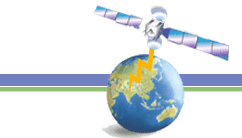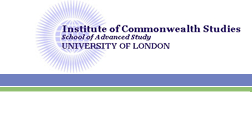|
Diversity and convergence: Indian and South Asian approaches to media regulation' - David Page and William Crawley, Institute of Commonwealth Studies, London University, presented at ICA Annual Conference Chicago May 2009 (Diversity and Convergence)
Negotiating the media; Regulatory and Policy issues in south Asia William Crawley Institute of Commonwealth Studies, London University
Presented at 9th International Conference on Communication and Mass Media, Athens Institute for Education and Research (ATINER), Athens, Greece - 16-19 May 2011 (Negotiating the Media)
Satellites over South Asia: Broadcasting, Culture and the Public Interest By David Page and William Crawley (Sage, New Delhi, London and Thousand Oaks 2001)
This comprehensive book tells the fascinating story of the satellite
revolution in South Asian broadcasting, which has transformed viewing
choices for audiences and posed dramatic new challenges for state
broadcasters and for broadcasting regulators. The book is based
on two years' research in different South Asian countries by a team
of research associates working with David Page and William Crawley
of the Media South Asia project at the Institute
of Development Studies at Sussex University.
The book charts the opening of the skies, the media
companies involved, the means of distribution and the reactions
of viewers to the huge and growing menu of programmes. It shows
that satellite TV has been instrumental in creating a new South
Asian popular culture which has proved both attractive and controversial.
Within India, it contrasts the early dominance of Hindi programmes
in the north with the situation in the south, where satellite services
soon developed in all four major languages. It also compares reactions
among India's northern neighbours to the popularity of Indian programmes,
which has posed a challenge to national broadcasting cultures, with
those in Sri Lanka, where the existence of terrestrial competition
has afforded greater national control of the process of change.
In the second half of the book, Page and Crawley
discuss the role of the state in the new media environment. They
examine government responses to the challenge of satellite competition
and show that the smaller countries, like Nepal and Sri Lanka, have
been more innovative in their responses than the larger and more
cultural diverse ones. The last two chapters assess where the public
interest lies in the new situation and outline policy issues for
the future.
Comments from the Reviews
"This truly monumental and definitive book
should be compulsory reading for all policy makers in South Asia,
and for the managers of the Satellite channels. There is a great
deal that they will learn from it, and that, hopefully, will alter
the nature of the media in South Asia" - Commonwealth
Broadcasting.
"From the Indian point of view, one of the
signal contributions of this book is the lucid documentation and
analysis of the experience of our neighbours. We have a great deal
to learn from them, especially because diverse policies and models
have been tried out by different countries" - Biblio
"The most comprehensive survey of South
Asian broadcasting so far attempted" - Seminar
"A useful and rich source of information
for anyone with a serious interest in the media and the people of
South Asia" - The Indian Express
"The first serious study of the subject"
- The News, Karachi
"A thought-provoking read"-
Sunday Observer, Colombo
"A rare media project that is pan-South
Asian in scope"- Himal South Asian.
Himal South Asian published a summary
of the project findings in its December 2000 edition.
The book is available from Sage
publications. A Pakistan edition is available from the Oxford
University Press, Karachi, and a Bangladesh edition from University
Press Limited, Dhaka
Chapter headings
...Preface
and Acknowledgements
1. Introduction
2. Colonial beginnings and Nationalist Imperatives
3. South Asia Goes Global
4. The Lure of the Indian Market
5. Whose Popular Culture
6. India North and South
7. The South Asian Footprint
8. The Response of the Nation State
9. Broadcasting and Community
10 Redefining the Public Interest
11 Agendas for Change
....Source
Material
THE AUTHORS
William
Crawley and David Page have shared an
interest in south Asia since their student days. They worked together
in the BBC World Service for over twenty years. They are currently
co-directors of the Media South Asia project, which is based at
the Institute of Commonwealth
Studies at London University.
RESEARCH ASSOCIATES
The Media South Asia project has relied from its inception on the knowledge and commitment of its research associates in the different South Asian countries. In the first phase - data collection and publication - the research agenda of the project involved the compilation of media profiles of the different south Asian countries and interviews with over four hundred key figures. Focus group discussions were held with six categories of people to gauge public reactions to satellite programmes in a number of key areas of cultural influence: language, dress, music, sport, cultural practices, patterns of consumption, social relations and the impact on women and children. Six district surveys were also carried out, three in India and one each in Bangladesh, Nepal and Sri Lanka, to measure reactions at different levels of society outside the metropolitan cities.
For the purposes of the research, India was divided into four regions, which were researched from Delhi (Md. Firoz and Saibal Das Gupta), Calcutta (Anuradha Mukherjee and Subir Bhaumik), Chennai (Lata Ramaseshan and Pritham Chakravarty) and Mumbai ( Deepa Bhatia, Mayank Bhatt and Nilu Damle). Because of India's size and centrality, three of our Indian research associates took specific briefs: the economics of the new media market (Mayank Bhatt), the role of government (Saibal Das Gupta) and the cultural influence of the satellite channels ( Deepa Bhatia). Though they worked only on India, their expertise fed into the work of other members of the group. Bangladesh (Afsan Chowdhury), Nepal (Deepak Thapa ), Pakistan (Tasneem Ahmar) and Sri Lanka (Sharni Jayawardena ) were each researched by one associate. Kunda Dixit, then Director of Panos South Asia, and Nalaka Gunawardene of TVE Asia Pacific acted as advisors to the project.
In phase two of the project, which concentrated on promoting public debate about the future of the South Asian media, research associates provided advice and attended some conferences and workshops.
Transnational Television Worldwide ed. Jean Chalaby (IB Tauris London 2005)
This book presents the first global overview of transnational television, looking in detail at some of the world’s main geocultural regions: Europe the Middle East, Africa, South Asia, Greater China, and Latin America. The expert contributors, who are located across five continents, analyse the key issues surrounding cross-border TV channels in the context of the global remapping of media spaces. This is a fresh and significant contribution to the examination of a subject that is crucial in the forming of a wider and deeper understating of the global media world we live in.
In Chapter 6, The Transnational and the National: Changing Patterns of Cultural Influence in the South Asian TV Market, David Page and William Crawley assess developments in the media in South Asia in the first years of the new millennium.
The chapter looks at the working of the Indian satellite TV market and the corporate consolidation of the cable TV market, especially in South India. It reviews the impact of new regional language channels, and the success of standalone news channels, which incorporate strong local and regional specialisms. It assesses the diversification of TV markets and the changing patterns of media and cultural influences in the northern subcontinent. It analyses new government approaches to media regulation and the exploitation of television channels for their revenue potential rather than as vehicles for information and nation building. The state sector in most countries has become as dependent on advertising as its commercial rivals but the inclinations of governments are instinctively against diversification and devolution. The chapter suggests that this will only come about if there is sufficient pressure from civil society. Though satellite television has provided cross-border audiences with new insights into life among their neighbours, at times of international conflict it has exacerbated tensions. The growth of Pakistani and Bangladeshi satellite channels as helped to counter the dominance of Indian satellite channels in these national markets. But the chapter concludes that the satellite revolution has yet to realise its potential to foster the creation of a broader South Asian civil society.
The book can be purchased at www.ibtauris.com, or http://www.amazon.co.uk/s/ref=nb_ss_w_h_/026-2045040-5130040?initialSearch=1&url=search-alias%3Daps&field-keywords=transnational+television+worldwide&Go.x=8&Go.y=14 |











